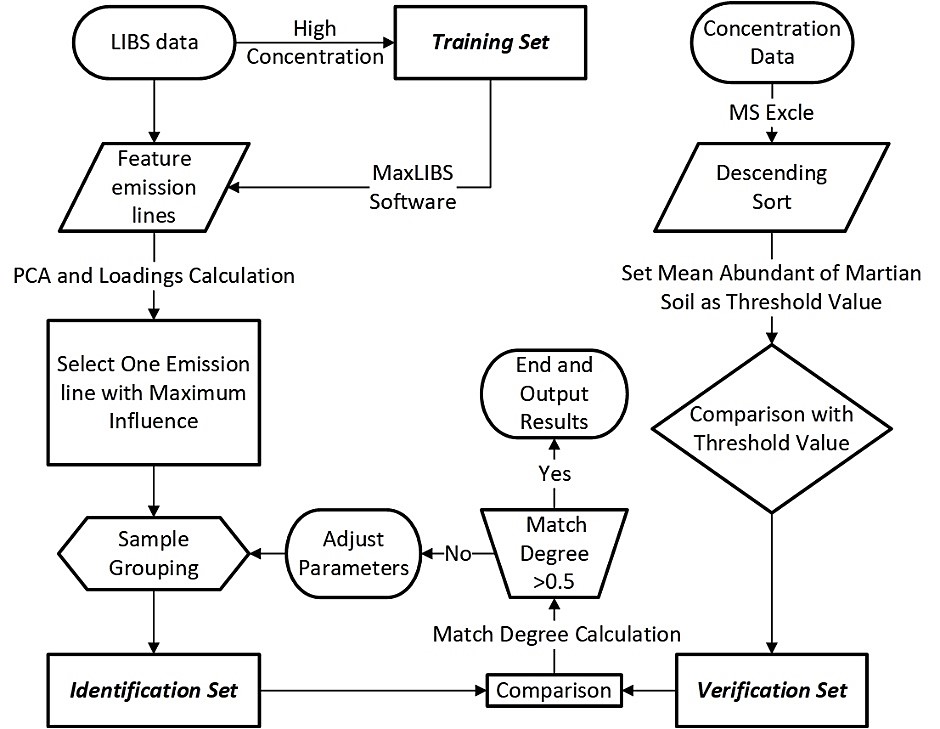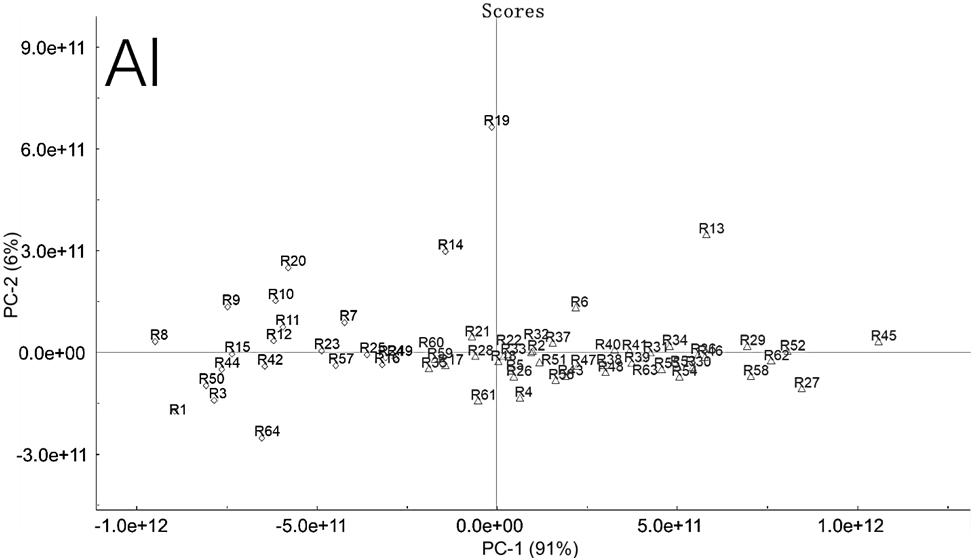The concentration and laser-induced break down spectroscopy data of 64 pre-flight calibration samples, published by the ChemCam team, were used as objects of research. Principal component analysis loading space distance method was used to analyze the target element, the most sensitive laser-induced breakdown spectral line of the target element was selected, and the mineral element species and abundance were identified with the identification accuracy up to 92.8% based on this method. The result shows that principal component analysis loading space distance can be used as a criterion to obtain the critical element information of minerals element abundance before, if aim to serve for, quantitative analysis. This study reduces the difficulty in rock/mineral classification and is beneficial to unknown minerals analysis, which offers an effective identification strategy for the Martian surface rock type analysis.

